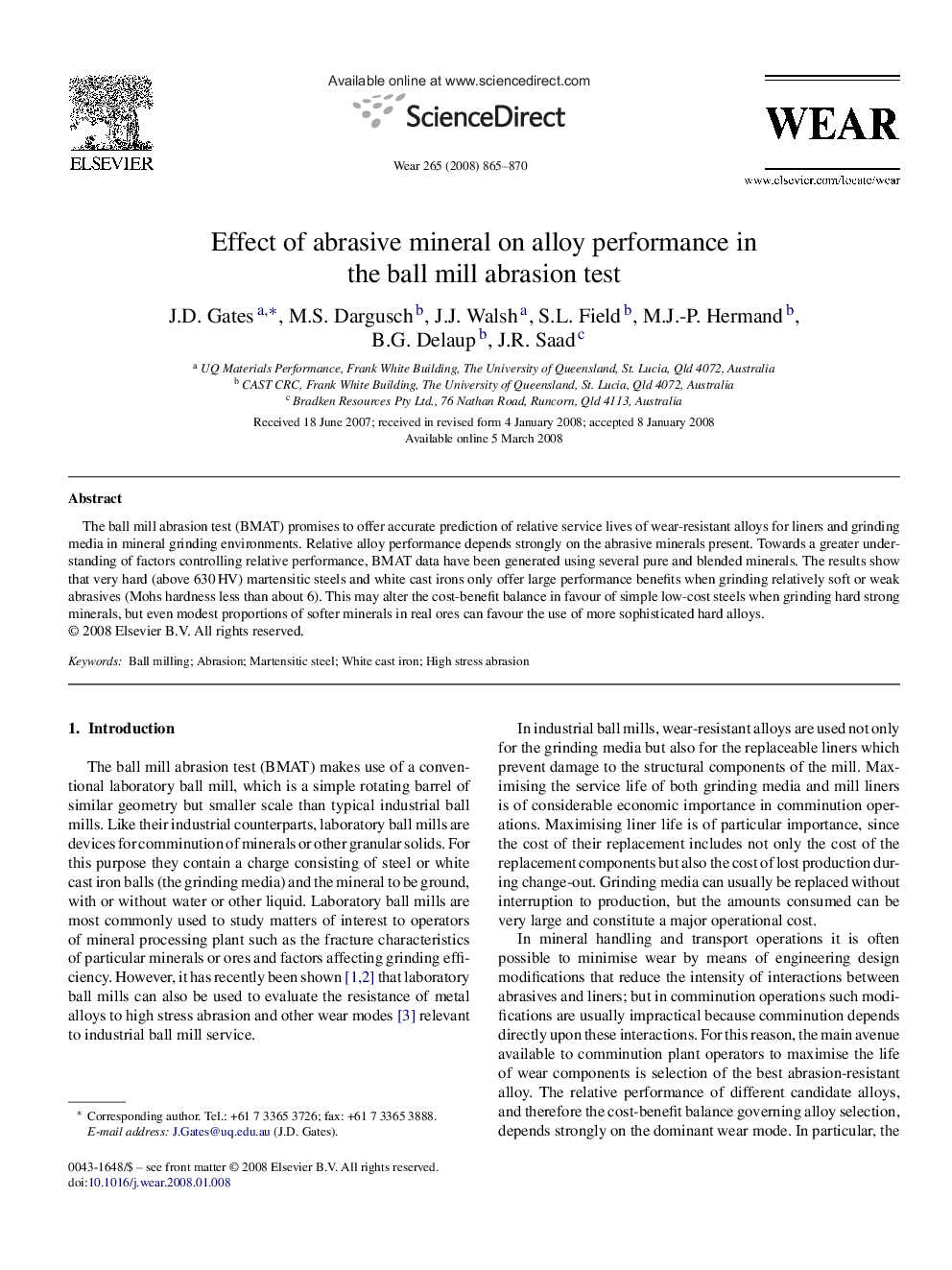| Article ID | Journal | Published Year | Pages | File Type |
|---|---|---|---|---|
| 619060 | Wear | 2008 | 6 Pages |
The ball mill abrasion test (BMAT) promises to offer accurate prediction of relative service lives of wear-resistant alloys for liners and grinding media in mineral grinding environments. Relative alloy performance depends strongly on the abrasive minerals present. Towards a greater understanding of factors controlling relative performance, BMAT data have been generated using several pure and blended minerals. The results show that very hard (above 630 HV) martensitic steels and white cast irons only offer large performance benefits when grinding relatively soft or weak abrasives (Mohs hardness less than about 6). This may alter the cost-benefit balance in favour of simple low-cost steels when grinding hard strong minerals, but even modest proportions of softer minerals in real ores can favour the use of more sophisticated hard alloys.
